Szechuan peppercorn jerky might be the best homemade jerky I make. After I tasted some commercially produced jerky of the same name and was unimpressed, I set out to make a version that actually tastes good using wild Szechuan peppercorns, prickly ash berries (Xanthoxylum americanum). It's one of my favorite prickly ash recipes.
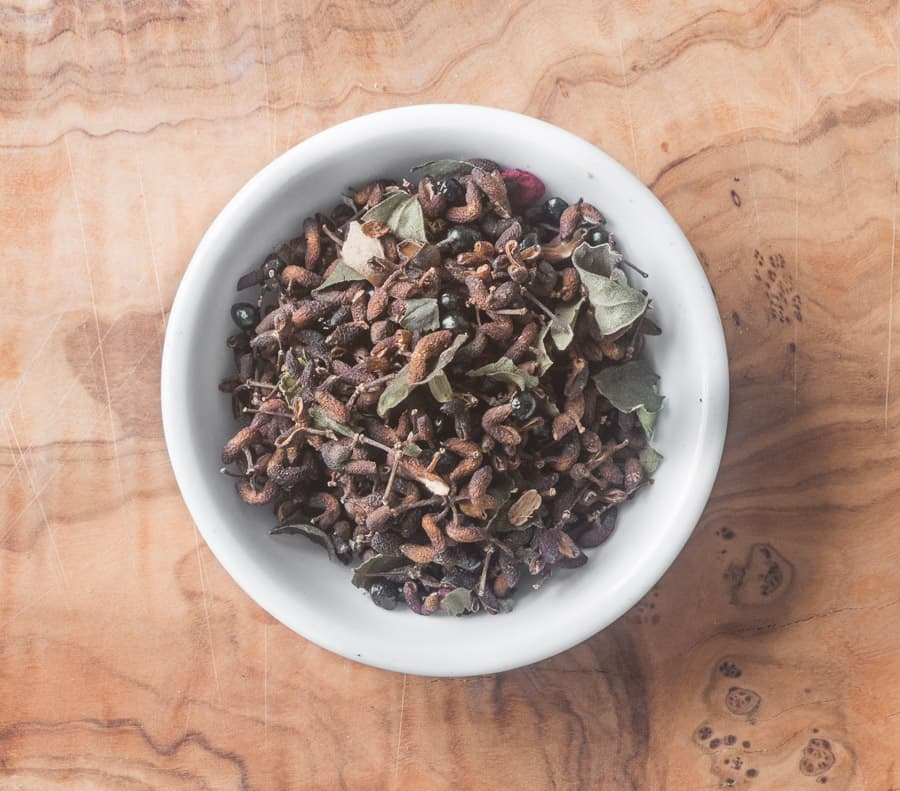
Commercial Jerky: Too Sweet, and Heavily Cured
The commercial jerky I had tasted like candied dried meat. It was over-cured, with a lot of sodium nitrite. There was no tell-tale citrus aroma, no mouth-watering gentle numb at the end, nothing, not even a spicy kick from chili. The money I wasted I made up for in peeved creativity, once I smelled my berries, I knew I could make myself a bag of serious salted meat snacks, and you better believe I was right.
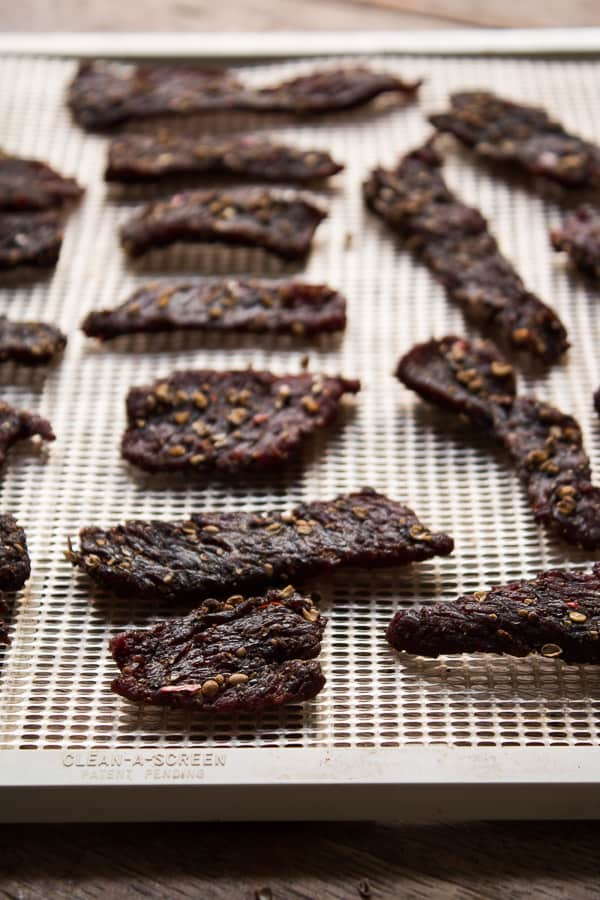
Szechuan peppercorns are widely available and used by Asian restaurants around the U.S., but the commercially sold dried "berries" are crazy intense in their flavor. With prickly ash, you can use more of them to get the citrus aroma you know and love without completely numbing your palate.
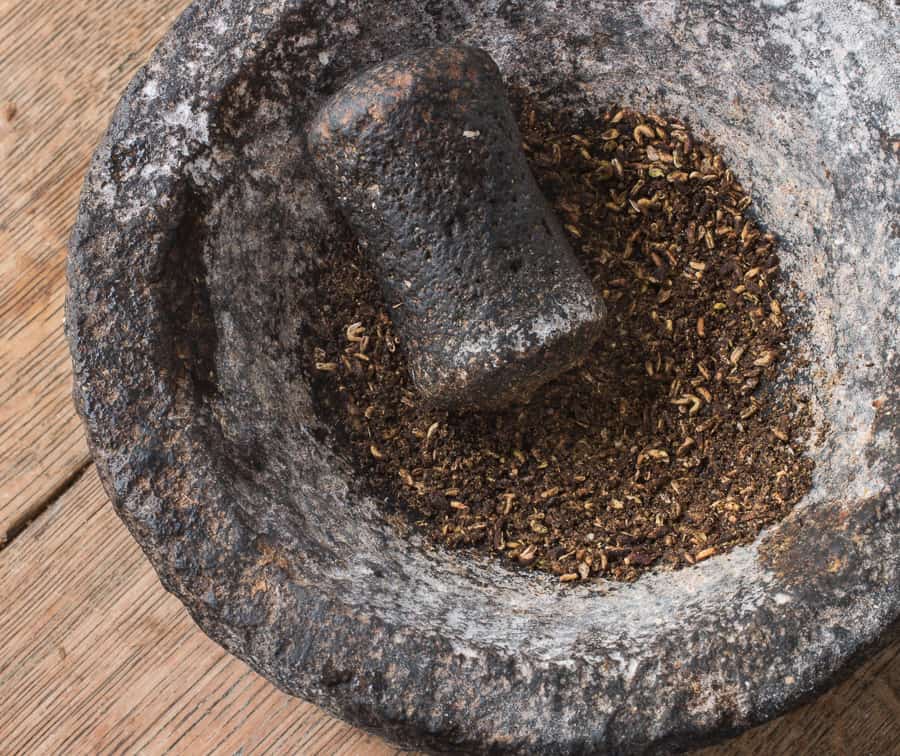
Dry Brine vs Wet Brine
A lot of jerky includes a liquid soak involving soy or another salty brine-like liquid, which can actually put more liquid into your meat, when you want to dry it out. I wanted dry, crunchy peppercorny jerky, so I made a dry brine, let it sit for 24 hours, then pressed the peppercorns into the pieces firmly before drying.
I also dislike overly sweet jerky, so if you're familiar with the process, or have your own recipes, you'll notice I use less sugar than most. Sugar, to me, mimics the taste of most commercially processed jerky.
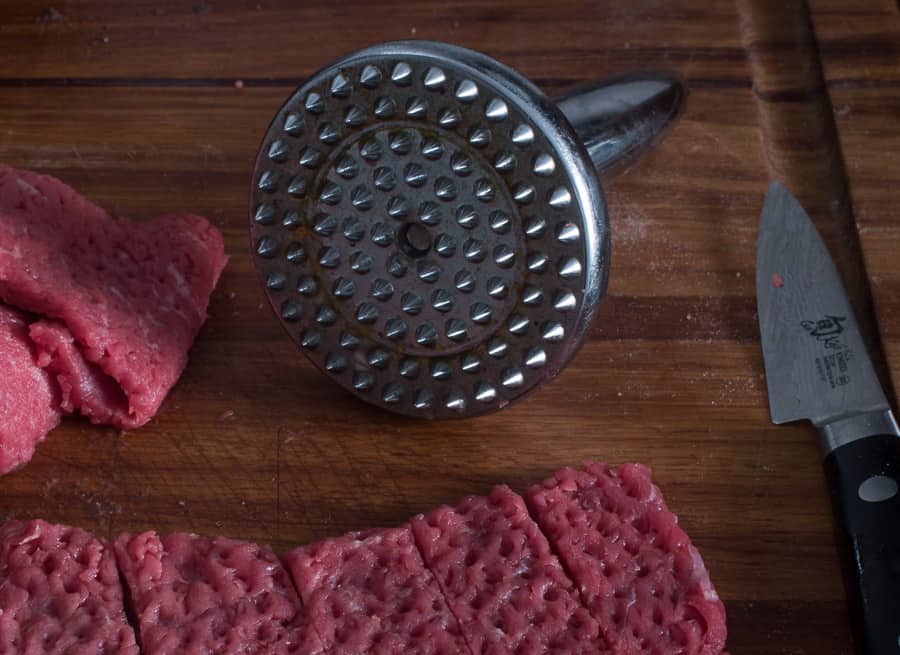
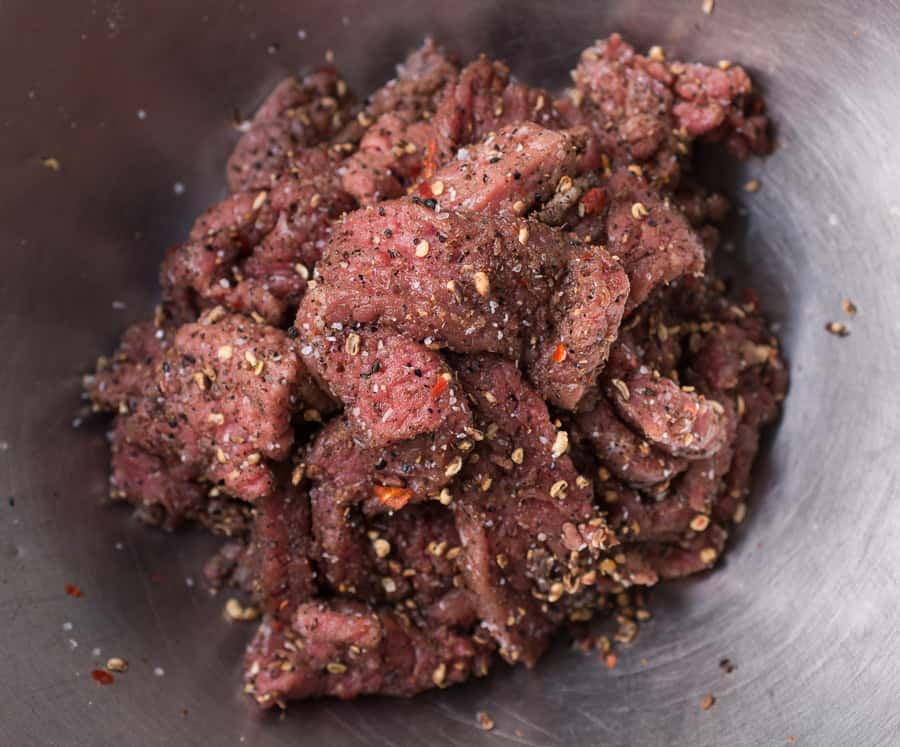

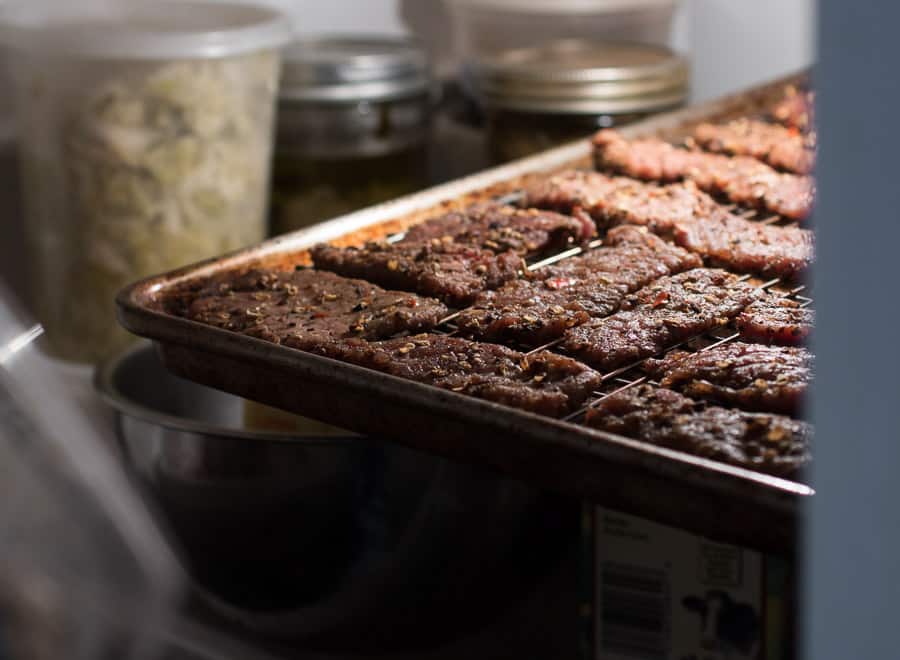
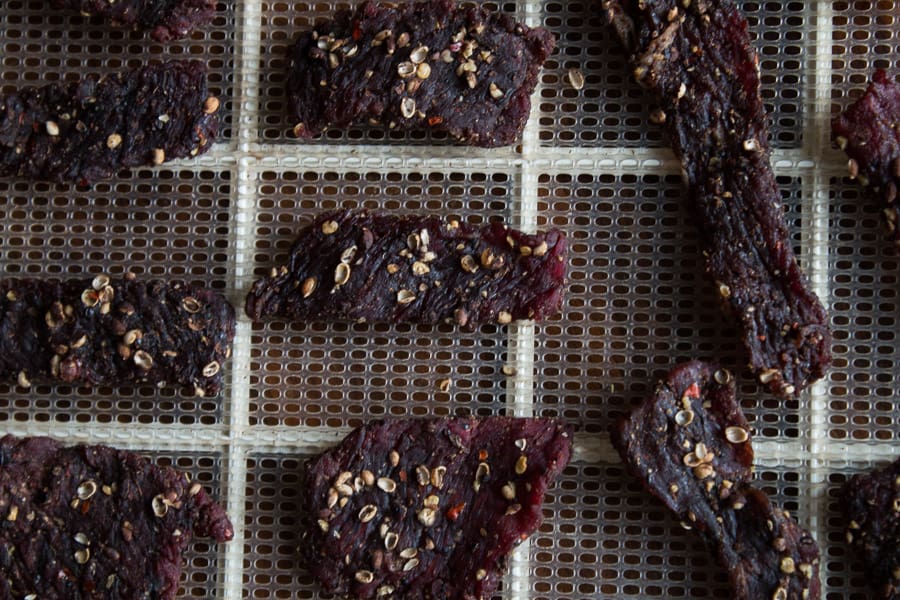
Not only do you get a fun crunch for the Xanthoxylum berries and the black pepper, the scent of the Szechuan peppercorns completely penetrates the meat, cracking open a bag of the stuff is like getting slapped firmly in the face with a stalk of lemongrass, hard.
If you have some berries laying around, try your hand at a batch sometime, or remember next season and pick some of your own, you won't regret it. They're crunchy, spicy, salty, and addictive.
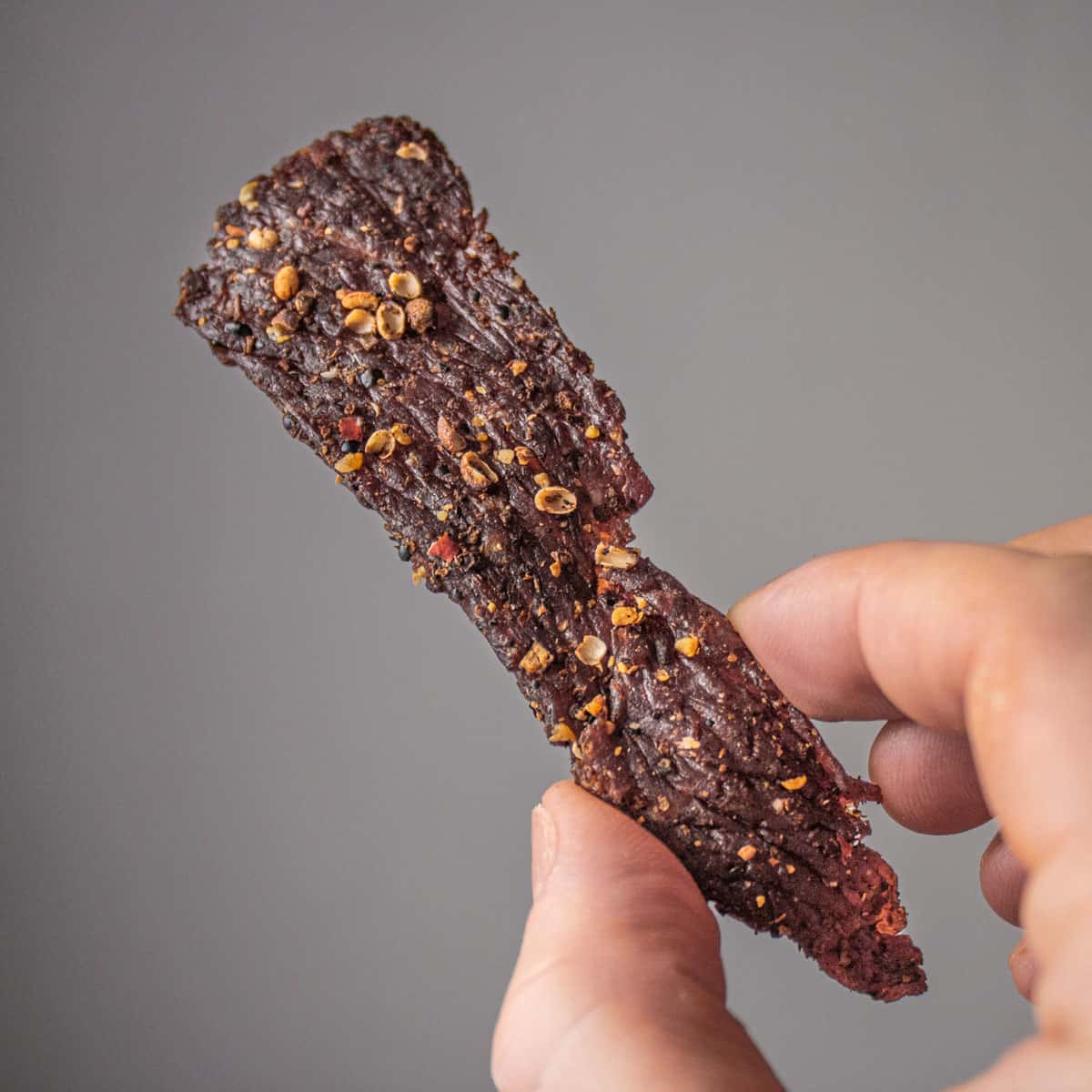
The recipe is super straightforward, toss some thin slices of meat (I like to pound them) with seasonings, let it sit overnight, then press all the crunchy, spice goodies into the slices before drying to help them stick, some will fall off, just peppercorns in a bag of Jack Links, but that's ok. Shoot, even if ever single berry falls off you will still get the flavor of the berries, like I said, it penetrates and perfumes the meat completely.
I scaled down my restaurant sized batch (10 lbs) and made a small one, but this can be scaled up to as many pounds of meat as you want with some simple multiplication.
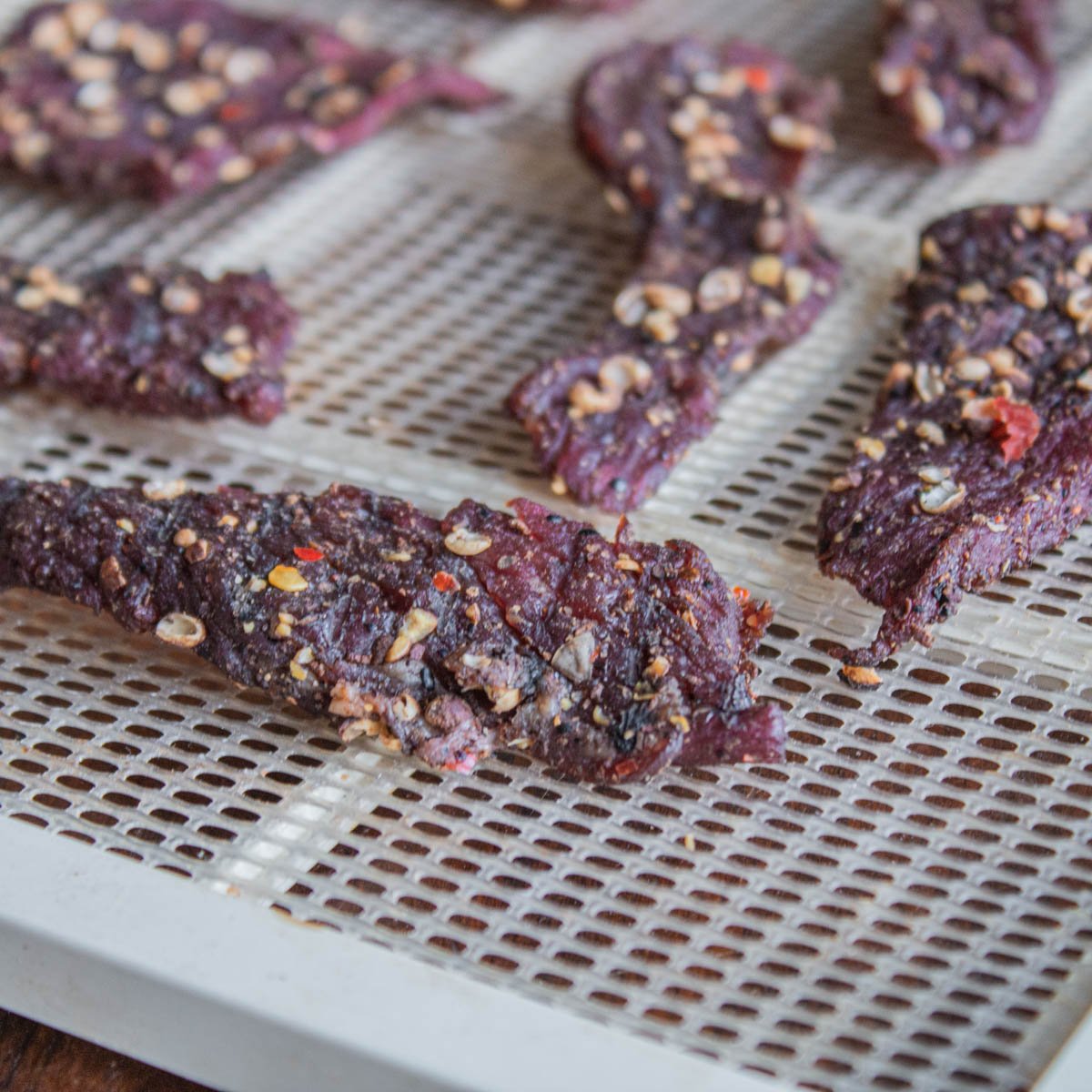
Wild Szechuan Peppercorn Jerky
Equipment
- Dehydrator
Ingredients
- 2 lbs lean red meat
- 2 tablespoon dried Zanthoxylum/prickly ash berries, picked over, black seeds discarded
- 5 small thai chilis or 2 teaspoons crushed red pepper flakes, or more to taste
- 2 tablespoon whole black peppecorns
- ¼ teaspoon pink salt/sodium nitrite optional
- 1.5 tablespoon kosher salt
- 1 tablespoon maple or brown sugar
- 1 tablespoon coriander seed
Instructions
- Toast the black pepper corns, then crush as coarse as you like for extra crunch, I like to use a molcajete for this, reserve the peppercorns, then grind the coriander seed the same way.
- Finely grind the szechuan peppercorns in a spice grinder and reserve.
- Slice the meat against the grain into ¼ inch slices, then pound with a meat mallet.
- Cut the meat into slices 2 inches long by roughly 3 inches long, then toss with the remaining ingredients and refrigerate overnight. I like to vacuum seal mine so the spices and aroma really penetrate.
- The next day, remove the meat from the fridge, spread out on racks, then put into a dehydrator at ~165 degrees F or into an oven on the warm setting, or into a warm oven with the door ajar.
- Allow the meat to dry for 2-4 hours, or until firm, but still a little pliable. Taste some of the jerky to check the texture and see if you like it, and dry some more if you want. If you dry your jerky in an oven it may dry much faster, since the temperature can run hotter than a dehydrator.
- When you're satisfied with your jerky, remove from the dehydrator or oven and refrigerate. The jerky will last for weeks if not longer (especially if you include the pink salt) under refrigeration, but if it lasts that long, you have a problem.

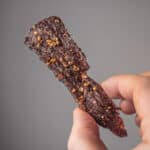
Gerald
Hmmm. I can't tell, from the article vs. a comment above, how aware you are of the difference between different Zanthoxylum species - but there is quite a diversity of species, and quite some difference in their characteristics. And I'm trying to research, write about, and grow some of them because even the botanical literature is a bit odd.
The Flora of China separates green and red Sichuan pepper(corns) into two different species, for example. And the Japanese Sansho (also used for Japanese kinome) is a different species again. Nepal seems to have yet another - and the strangest I know in terms of growth is one from Southeast Asia which still withstands quite strong frost, but isn't truly deciduous...
Alan Bergo
Hi! Thanks for chiming in Gerald. I live in Minnesota, so my knowledge of Asiatic herbs and plants is limited. Basically I know from personal research that I can cook with unripe, green Zanthoylum berries, as well as ripe red ones. For the most part, our species here seems to resemble to cold weather hardy species you mention, they have great tasting berries, but the leaves aren't that great. Out of every place I've found the plant in my region, only one place seems to have different species, and the different species have leaves that are very flavorful, like keffir lime. It is difficult to differentiate between different species here since relatively no one considers them food, and the plants grow feral, with different species growing together. After you taste a few leaves, the numbing quality kicks in, and things get tricky. Again, thanks for your insight.
Gerald
Don't I know that feeling, of how tricky things get with such strong flavors 😉
Alright, let me see if I can really provide some insight this year, and starting soon. My Sansho (Japanese Zanthoxylum, overwintered in a cold room indoors) has survived and is already sprouting again - rather too early. Time to try it.
If you have more/closer photos of the kinds you have, I'd love to try and see if I can recognize them via the botanical key to Zanthoxylum species I have. And I may have to hit you up for some ripe seeds. Maybe get you some sansho powder from Japan, Sichuan pepper from China to compare...
Melissa
Definitely going to try this! I love Sichuan peppercorns/berries and jerky. Might even try this with a few extra kombucha scobys I have lying around. I will probably sift out the crushed berries though, as the outer shells of these things tend to get stuck to the roof of one’s mouth and in teeth 🙂 thanks for posting!
Alan Bergo
Yep it's a fun, simple way to use them.
Ellen
I make a tree-tini with prickly ash infused vodka and licorice fern liqueur. Haven't cooked with them yet, but Michael loves jerky and has a bday coming up, so I"m happy to see this.
Sam Schaperow
A lot of the Sichuan peppercorns I've had have been very mild with a little numbing effect. However, it seems when I get ones that were Fresh then they are very potent. So I'm not sure if the heat treatment causing the problem. It might be the freshness. I'm not positive.
Alan Bergo
That's a great point Sam. The ones I purchase in bulk for restaurant use are from a very reputable purveyor, and I'm inclined to think that there's are about the highest quality I can get locally, without laboriously picking, drying and picking through my own. Great thing to consider though, as always with dried spices.
Jack Guard
WOW…thanks for the great recipe idea! I lived/worked in China for many years and now irk as an Asian cuisine chef. Sichuan cooking is my favorite so of course the prickly ash is also a favorite….what you said is right but also you can buy the GREEN dried Sichuan peppercorns online and they are POWERFUL….tingle your lips/tongue/mouth right off your body….the American version is interesting but not anything as potent as these babies…I live in Upper Michigan (Yooper) and they grow here too…I love the fragrance of the leaves the most---anywho my 5 cents worth…an added treat if you LOVE this tingling stuff…there is ONE product that goes with this to no end and should be eaten together….you won't believe it….it's ICE CREAM!!! any flavor…..your welcome… 🙂 btw…i have 8 kilos of FRESH Sichuan peppercorn coming via tourist mule in a few weeks… :)red and green… 🙂
Alan Bergo
That's great. I love the fresh green berries since you don't have to pick through them for seeds. I'll have to look up some online sources to share with people. Do you have a source you prefer? And ice cream, lol, I'll have to try that. What's your favorite way to use the leaves? I've found large differences between species, but it's hard to tell them apart sometimes, especially when your mouth is numb from trying them all. Thanks Jack.